In
Geometry Smarts! you will learn about lines, angles, planes and rays. Lucille Caron and Philip M. St. Jacques walk you through the basics of polygons, triangles, circles and more in a clear, concise, step-by-step manner.
About the Authors Lucille Caron and Philip M. St.
Jacques are New Jersey public school educators. They have collaborated on various educational math projects, including editing, test writing, and text book committee work. 
If you were to look up the meaning of the word
mathematics, you would find that it is the study of numbers, quantities, and shapes, and how they relate to each other. Mathematics is very important to all world cultures, including our world of work. The following are just some of the ways in which studying math will help you: You will know how much money you are spending at the store and if the cashier has given you the right change. You will know how to use measurements to build things.
Your science classes will be easier and more interesting. You will understand music on a whole new level. You will be empowered to qualify for and land a rewarding job. Geometry comes from the Greek word geometria and means "earth measure." It means you can use geometry to measure anything on earth. No matter whatshape something has, you can measure its perimeter and area or volume. And no matter what size a rectangle iswhether it be a computer chip, an Olympicsizedswimming pool, or a city blockyou can always find its area by multiplying length by width.
How does a builder know how big a roof will be on a new house? Geometry! How does a gardener know how many bags of fertilizer will cover the garden?Geometry! How do we know how much water is in the ocean? Geometry! This book has been written so that you can learn about geometry at your own speed. Use it on your own or with a friend, tutor, or parent. 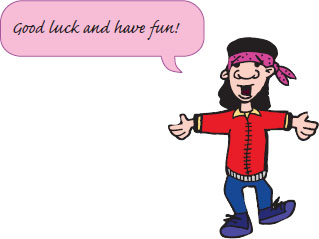
Some important terms that are frequently used in geometry are Point, Line, and Plane. Point A point has position and it determines a location in space. The symbol for a point is a dot (). It can be written as "A" and read as "point A." Line In geometry, a line extends endlessly in both directions.
It is a continuous set of points in a straight path that goes on forever. A line is named by any two points that lie on it. The symbol for a line is an arrow  Lines can be horizontal, vertical, or oblique.
Lines can be horizontal, vertical, or oblique.  The line below can be called
The line below can be called  or line L. The first two names are read "line CE" and "line EC."
or line L. The first two names are read "line CE" and "line EC." 
There is an infinite number of points on any
line. Two points determine one
line.
Plane A plane is any flat surface that continues in all directions. You can think of a plane as a flat table top that extends forever in all directions. A plane is named by any three points that lie on it. The plane below is named as plane XYZ. 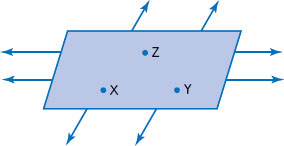 Intersecting Lines Two lines that meet are called intersecting lines.
Intersecting Lines Two lines that meet are called intersecting lines. 
 This is read as "line BF intersects line AE at point C."
This is read as "line BF intersects line AE at point C."
Two intersecting straight lines will meet at one
point.
Three points, not all on a straight line, determine a plane.
Line Segment A line segment is part of a line. It has two endpoints.

The symbol for a line segment is . The line segment above is written as

or

and read "line segment FG" or "line segment GF." The shortest distance between two points is a line segment. Ray A ray is part of a line.
It has one endpoint but goes on forever in the other direction. Two examples are  The symbol for a ray is an arrow in one direction:
The symbol for a ray is an arrow in one direction:  The above are written as
The above are written as  and read, "ray XY" and "ray BA." To name a ray, name the endpoint and any other point on the ray. The first letter used in naming a ray is always the endpoint.
and read, "ray XY" and "ray BA." To name a ray, name the endpoint and any other point on the ray. The first letter used in naming a ray is always the endpoint.
You can think of a
ray as a ray of sunshine that starts at the sun and continues on forever. The endpoint is the sun. Perpendicular Lines Two lines that intersect and form a right angle are called perpendicular lines.
A right angle measures 90 degrees. You will learn more about angles in the next chapter. 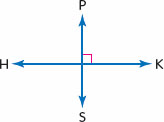 Line PS is perpendicular to line HK. The symbol for perpendicular is
Line PS is perpendicular to line HK. The symbol for perpendicular is  We write this as
We write this as  Parallel Lines Parallel lines are two lines that lie in the same plane yet never intersect. The shortest distance between parallel lines is the same along the entire length of the lines.
Parallel Lines Parallel lines are two lines that lie in the same plane yet never intersect. The shortest distance between parallel lines is the same along the entire length of the lines.  Line AB is parallel to line CD.
Line AB is parallel to line CD.
The symbol for parallel is ||.We write this as  Skewed Lines Lines that are not in the same plane and do not intersect are called skewed lines. Lines KL and RT are skewed lines.
Skewed Lines Lines that are not in the same plane and do not intersect are called skewed lines. Lines KL and RT are skewed lines. 
Rays or segments are parallel if the lines that contain them are parallel.
Angles are formed whenever two lines intersect. They can be measured using a protractor. Navigators use a different tool, a sextant, to measure the angle between the horizon and the sun.
It helps them determine their exact locationon Earth. Definition of an Angle An angle is made when two lines intersect or two rays share one endpoint. The point of intersection or the endpoint is called the angle's vertex. 



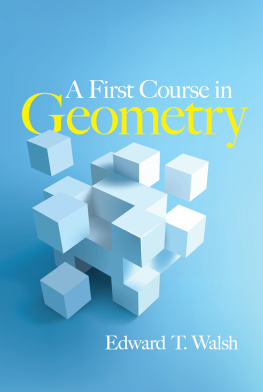
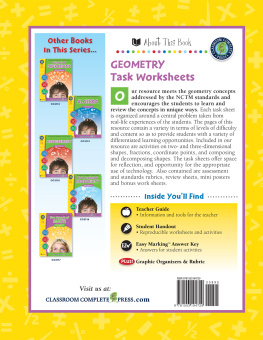


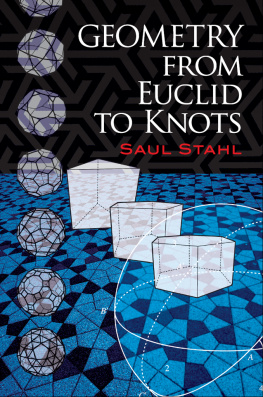
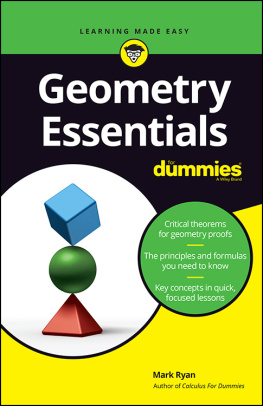
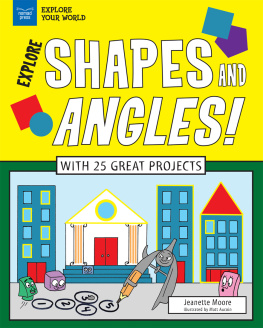
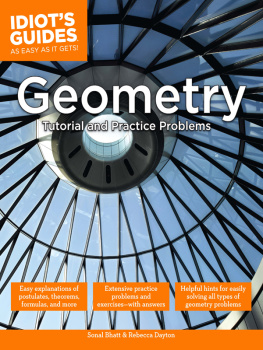
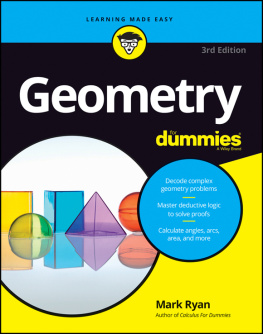



 Lines can be horizontal, vertical, or oblique.
Lines can be horizontal, vertical, or oblique.  The line below can be called
The line below can be called  or line L. The first two names are read "line CE" and "line EC."
or line L. The first two names are read "line CE" and "line EC." 
 Intersecting Lines Two lines that meet are called intersecting lines.
Intersecting Lines Two lines that meet are called intersecting lines. 
 This is read as "line BF intersects line AE at point C."
This is read as "line BF intersects line AE at point C." The symbol for a line segment is . The line segment above is written as
The symbol for a line segment is . The line segment above is written as  or
or  and read "line segment FG" or "line segment GF." The shortest distance between two points is a line segment. Ray A ray is part of a line.
and read "line segment FG" or "line segment GF." The shortest distance between two points is a line segment. Ray A ray is part of a line.  The symbol for a ray is an arrow in one direction:
The symbol for a ray is an arrow in one direction:  The above are written as
The above are written as  and read, "ray XY" and "ray BA." To name a ray, name the endpoint and any other point on the ray. The first letter used in naming a ray is always the endpoint.
and read, "ray XY" and "ray BA." To name a ray, name the endpoint and any other point on the ray. The first letter used in naming a ray is always the endpoint. Line PS is perpendicular to line HK. The symbol for perpendicular is
Line PS is perpendicular to line HK. The symbol for perpendicular is  We write this as
We write this as  Parallel Lines Parallel lines are two lines that lie in the same plane yet never intersect. The shortest distance between parallel lines is the same along the entire length of the lines.
Parallel Lines Parallel lines are two lines that lie in the same plane yet never intersect. The shortest distance between parallel lines is the same along the entire length of the lines.  Line AB is parallel to line CD.
Line AB is parallel to line CD. Skewed Lines Lines that are not in the same plane and do not intersect are called skewed lines. Lines KL and RT are skewed lines.
Skewed Lines Lines that are not in the same plane and do not intersect are called skewed lines. Lines KL and RT are skewed lines. 
